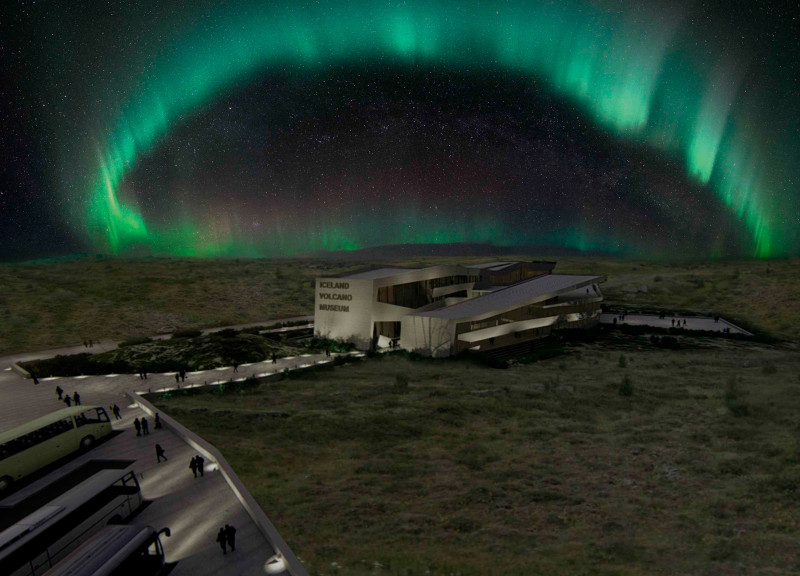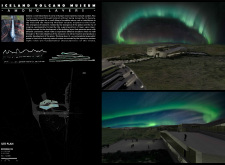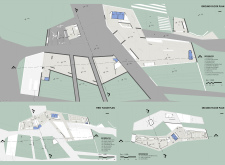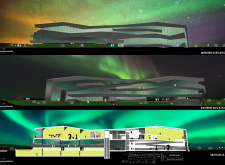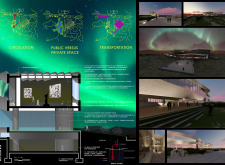5 key facts about this project
The museum integrates with the surrounding terrain through a thoughtful selection of materials and structural forms. Its concept is informed by the geological layering typical of the Icelandic landscape, where tectonic shifts and volcanic activities shape the earth. The structure features expansive glass façades, allowing for natural light and stunning vistas of both the internal spaces and the external surroundings. Functionally, the museum is divided into distinct areas, including exhibition halls, auditoriums, and shared communal spaces, facilitating a seamless visitor experience.
Innovative Design Approaches in Functionality and Aesthetics
One unique aspect of the design is how it reflects and responds to Iceland's geological characteristics. The use of concrete serves a dual purpose: it provides a sturdy structural framework and symbolizes the raw power of volcanic activity. The integration of natural stone finishes reinforces the connection to the local landscape, blurring distinctions between the built environment and nature. Large, triple-glazed windows ensure thermal efficiency while framing views of the Northern Lights, creating a dynamic atmosphere that changes throughout the day and seasons.
Another distinguishing feature is the arrangement of the interior spaces. The circulation path is clearly defined, guiding visitors naturally from the entrance to exhibition spaces and communal areas. This design choice not only facilitates ease of movement but also allows for educational experiences to unfold organically, with each area purposefully interconnected to reflect the story of Iceland's geological history.
Interior Space and Visitor Engagement
The interior of the museum is designed with a focus on visitor engagement. Community rooms and multi-purpose auditoriums are strategically located to host workshops and educational programs, while exhibition spaces utilize interactive displays that encourage hands-on learning. The layout ensures that visitors can explore various geological phenomena in a cohesive manner, enhancing their understanding of the material presented.
Incorporating environmental considerations, the project emphasizes sustainability through its material choices and energy-efficient design. The use of local materials aligns the architecture with the surrounding environment while minimizing transportation impacts. This thoughtful approach to sustainability further distinguishes the Iceland Volcano Museum from other similar projects, reinforcing its role as a model for future architectural endeavors in ecologically sensitive regions.
The Iceland Volcano Museum represents a commitment to both architectural innovation and educational outreach. Its design provides visitors with a unique opportunity to engage with Iceland’s natural history, making it an integral part of the region's cultural and educational landscape. For more detailed insights into the architectural plans, sections, and overall design, readers are encouraged to explore the project presentation.


